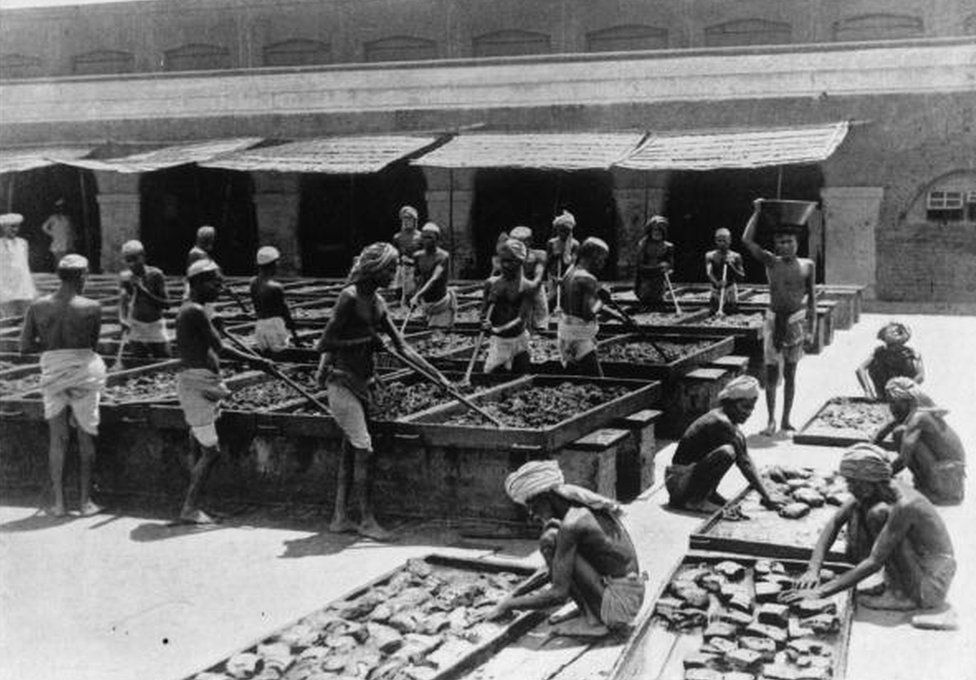

- Role of british east india company; impact on opium trade when eic’s monopoly ends full#
- Role of british east india company; impact on opium trade when eic’s monopoly ends series#

Until 1612 the company conducted separate voyages, separately subscribed.Īs Elizabeth I was signing that charter, her counterpart in India – Mughal emperor Akbar – was the overlord of an empire that spanned nearly two million square kilometres, stretching from Afghanistan in the northwest to the Deccan plateau in central India, and skimming the borders of the highlands of Assam. The defeat of the Spanish Armada by England in 1588 gave them a chance to break the monopoly. (1000 percent profits were not unheard of.)

The company was formed to, ostensibly, share in the East Indian spice trade, which had been monopolized by Spain and Portugal.

But on that December 31, there was little to indicate that a tumultuous part of modern history was to unfold. Their conduct in India would, in time, come to define colonization as a concept.
Role of british east india company; impact on opium trade when eic’s monopoly ends full#
Its full name was - Honourable Company of Merchants of London Trading with the East Indies. A year later, the Governor and Company of Merchants trading to the East Indies, a group of 218 men, received a royal charter, giving them a monopoly for 15 years over “trade to the East”.” William Dalrymple wrote in The Guardian about the origins of this company - “On 24 September, 1599, 80 merchants and adventurers met at the Founders Hall in the City of London and agreed to petition Queen Elizabeth I to start up a company. 102 years after Vasco da Gama discovered the sea route to the Indian Ocean, the group of merchants led by Sir Thomas Smythe petitioned Queen Elizabeth I to grant them a royal charter to trade with the countries of the eastern hemisphere. The British East India Company was incorporated in England on December 31, 1600. Has any company ever influenced the lives of some many people and so many nations across the earth like the East India Company has, while being pretty darn broke? To think it was a company that came to trade but stayed to rule. It played a central role in Britain's rise to commercial promninence, the creation of the British Empire, and the integration of global markets. It established most of the major cities in India, as well as ports like Penang and Singapore and its footprint stretched all the way to Japan. Writer and commentator Gurcharan Das, said, “The modern corporation is.a child of the East India Company.” It essentially caused two Opium Wars that led to the opening up of China as a market, on the back of Britain’s military prowess. At one point in time, the East India Company had the largest military in the world and effectively owned in entirety a piece of land that we now know as India, Pakistan, Bangladesh and Myanmar. In this episode, we take a look at a candidate for the title of ‘most powerful company in history.' Towards the end of the reign of Queen Elizabeth I - arguably one of the most powerful monarchs in world history - a company emerged that would go on to be one of the most powerful in the world - The British East India Company (EIC). I-T sleuths seize Rs 2.5 crore in cash, Rs 1-crore jewellery from real estate groupĬloser to modern times, Standard Oil, Ford Motor Company, and newer giant corporations like ExxonMobil, Walmart, Microsoft, Apple, SaudiAramco etc helped shape our world. Now you know how the Dutch financed all those pretty canals and houses in Amsterdam and elsewhere. A business concern with that much wealth and power would, without a doubt, have held sway over large swathes of the planet, and in some powerful places as well. Add Germany’s GDP and you arrive at the value of VOC or the Dutch East India Company. To put that into a modern perspective, Japan’s GDP, the third largest in the world right now, is between $4.8 and $5 trillion. That’s more value that the top 20 companies of our times combined. And the monies were staggering.įor instance, did you know that the Dutch East India Company, a megacorporation that existed from 1601 to 1799, is estimated to have been worth 7.9 trillion dollars in today’s money? That was in 1637 at the height of something called the Tulip Mania, probably the first financial bubble in the world. And, of course, the fabulous wealth they earned, albeit on the back of slavery, indentured labour and other sundry methods of dehumanizing the people they conquered so they didn’t have to pay fair wages. In fact, their spectacular, and consistent, success resulted in legacies that lasted well into the future. These were the large companies that built business empires (sometimes even actual empires) and shaped the geography, politics, history and cultures of the world.
Role of british east india company; impact on opium trade when eic’s monopoly ends series#
Interview Series Business In The Week Ahead.


 0 kommentar(er)
0 kommentar(er)
